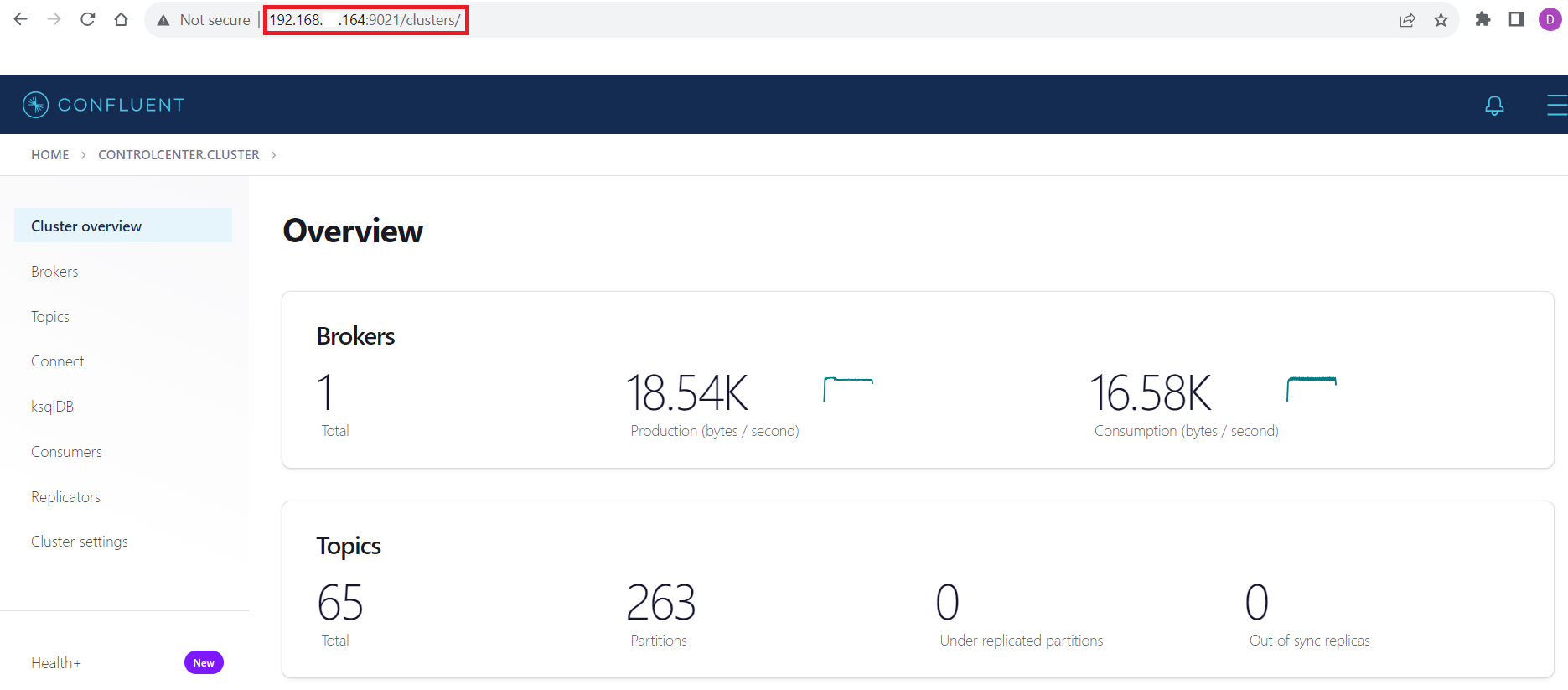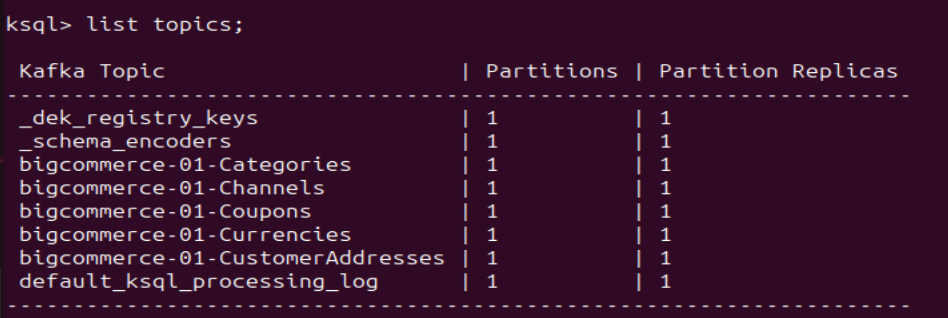Discover how a bimodal integration strategy can address the major data management challenges facing your organization today.
Get the Report →Stream HubDB Data into Apache Kafka Topics
Access and stream HubDB data in Apache Kafka using the CData JDBC Driver and the Kafka Connect JDBC connector.
Apache Kafka is an open-source stream processing platform that is primarily used for building real-time data pipelines and event-driven applications. When paired with the CData JDBC Driver for HubDB, Kafka can work with live HubDB data. This article describes how to connect, access and stream HubDB data into Apache Kafka Topics and to start Confluent Control Center to help users secure, manage, and monitor the HubDB data received using Kafka infrastructure in the Confluent Platform.
With built-in optimized data processing, the CData JDBC Driver offers unmatched performance for interacting with live HubDB data. When you issue complex SQL queries to HubDB, the driver pushes supported SQL operations, like filters and aggregations, directly to HubDB and utilizes the embedded SQL engine to process unsupported operations client-side (often SQL functions and JOIN operations). Its built-in dynamic metadata querying allows you to work with and analyze HubDB data using native data types.
Prerequisites
Before connecting the CData JDBC Driver for streaming HubDB data in Apache Kafka Topics, install and configure the following in the client Linux-based system.
- Confluent Platform for Apache Kafka
- Confluent Hub CLI Installation
- Self-Managed Kafka JDBC Source Connector for Confluent Platform
Define a New JDBC Connection to HubDB data
- Download CData JDBC Driver for HubDB on a Linux-based system
- Follow the given instructions to create a new directory extract all the driver contents into it:
- Create a new directory named HubDB
mkdir HubDB - Move the downloaded driver file (.zip) into this new directory
mv HubDBJDBCDriver.zip HubDB/ - Unzip the CData HubDBJDBCDriver contents into this new directory
unzip HubDBJDBCDriver.zip
- Create a new directory named HubDB
- Open the HubDB directory and navigate to the lib folder
ls cd lib/ - Copy the contents of the lib folder of HubDB into the lib folder of Kafka Connect JDBC. Check the Kafka Connect JDBC folder contents to confirm that the cdata.jdbc.hubdb.jar file is successfully copied into the lib folder
cp * ../../confluent-7.5.0/share/confluent-hub-components/confluentinc-kafka-connect-jdbc/lib/ cd ../../confluent-7.5.0/share/confluent-hub-components/confluentinc-kafka-connect-jdbc/lib/ - Install the CData HubDB JDBC driver license using the given command, followed by your Name and Email ID
java -jar cdata.jdbc.hubdb.jar -l - Enter the product key or "TRIAL" (In the scenarios of license expiry, please contact our CData Support team)
- Start the Confluent local services using the command:
confluent local services startThis starts all the Confluent Services like Zookeeper, Kafka, Schema Registry, Kafka REST, Kafka CONNECT, ksqlDB and Control Center. You are now ready to use the CData JDBC driver for HubDB to stream messages using Kafka Connect Driver into Kafka Topics on ksqlDB.
![Start the Confluent local services Start the Confluent local services]()
- Create the Kafka topics manually using a POST HTTP API Request:
curl --location 'server_address:8083/connectors' --header 'Content-Type: application/json' --data '{ "name": "jdbc_source_cdata_hubdb_01", "config": { "connector.class": "io.confluent.connect.jdbc.JdbcSourceConnector", "connection.url": "jdbc:hubdb:AuthScheme=OAuth;OAuthClientID=MyOAuthClientID;OAuthClientSecret=MyOAuthClientSecret;CallbackURL=http://localhost:33333;; InitiateOAuth=GETANDREFRESH", "topic.prefix": "hubdb-01-", "mode": "bulk" } }'Let us understand the fields used in the HTTP POST body (shown above):
- connector.class: Specifies the Java class of the Kafka Connect connector to be used.
- connection.url: The JDBC connection URL to connect with HubDB data.
Built-in Connection String Designer
For assistance in constructing the JDBC URL, use the connection string designer built into the HubDB JDBC Driver. Either double-click the JAR file or execute the jar file from the command-line.
java -jar cdata.jdbc.hubdb.jarFill in the connection properties and copy the connection string to the clipboard.
There are two authentication methods available for connecting to HubDB data source: OAuth Authentication with a public HubSpot application and authentication with a Private application token.
Using a Custom OAuth App
AuthScheme must be set to "OAuth" in all OAuth flows. Be sure to review the Help documentation for the required connection properties for you specific authentication needs (desktop applications, web applications, and headless machines).
Follow the steps below to register an application and obtain the OAuth client credentials:
- Log into your HubSpot app developer account.
- Note that it must be an app developer account. Standard HubSpot accounts cannot create public apps.
- On the developer account home page, click the Apps tab.
- Click Create app.
- On the App info tab, enter and optionally modify values that are displayed to users when they connect. These values include the public application name, application logo, and a description of the application.
- On the Auth tab, supply a callback URL in the "Redirect URLs" box.
- If you're creating a desktop application, set this to a locally accessible URL like http://localhost:33333.
- If you are creating a Web application, set this to a trusted URL where you want users to be redirected to when they authorize your application.
- Click Create App. HubSpot then generates the application, along with its associated credentials.
- On the Auth tab, note the Client ID and Client secret. You will use these later to configure the driver.
Under Scopes, select any scopes you need for your application's intended functionality.
A minimum of the following scopes is required to access tables:
- hubdb
- oauth
- crm.objects.owners.read
- Click Save changes.
- Install the application into a production portal with access to the features that are required by the integration.
- Under "Install URL (OAuth)", click Copy full URL to copy the installation URL for your application.
- Navigate to the copied link in your browser. Select a standard account in which to install the application.
- Click Connect app. You can close the resulting tab.
Using a Private App
To connect using a HubSpot private application token, set the AuthScheme property to "PrivateApp."
You can generate a private application token by following the steps below:
- In your HubDB account, click the settings icon (the gear) in the main navigation bar.
- In the left sidebar menu, navigate to Integrations > Private Apps.
- Click Create private app.
- On the Basic Info tab, configure the details of your application (name, logo, and description).
- On the Scopes tab, select Read or Write for each scope you want your private application to be able to access.
- A minimum of hubdb and crm.objects.owners.read is required to access tables.
- After you are done configuring your application, click Create app in the top right.
- Review the info about your application's access token, click Continue creating, and then Show token.
- Click Copy to copy the private application token.
To connect, set PrivateAppToken to the private application token you retrieved.
![Using the built-in connection string designer to generate a JDBC URL (Salesforce is shown.) Using the built-in connection string designer to generate a JDBC URL (Salesforce is shown.)]()
- Log into your HubSpot app developer account.
- topic.prefix: A prefix that will be added to the Kafka topics created by the connector. It's set to "hubdb-01-".
- mode: Specifies the mode in which the connector operates. In this case, it's set to "bulk", which suggests that the connector is configured to perform bulk data transfer.
This request adds all the tables/contents from HubDB as Kafka Topics.
Note: The IP Address (server) to POST the request (shown above) is the Linux Network IP Address.
- Run ksqlDB and list the topics. Use the commands:
ksql list topics;![List the Kafka Topics (BigCommerce is shown) List the Kafka Topics (BigCommerce is shown)]()
- To view the data inside the topics, type the SQL Statement:
PRINT topic FROM BEGINNING;
Connecting with the Confluent Control Center
To access the Confluent Control Center user interface, ensure to run the "confluent local services" as described in the above section and type http://<server address>:9021/clusters/ on your local browser.

Get Started Today
Download a free, 30-day trial of the CData JDBC Driver for HubDB and start streaming HubDB data into Apache Kafka. Reach out to our Support Team if you have any questions.









